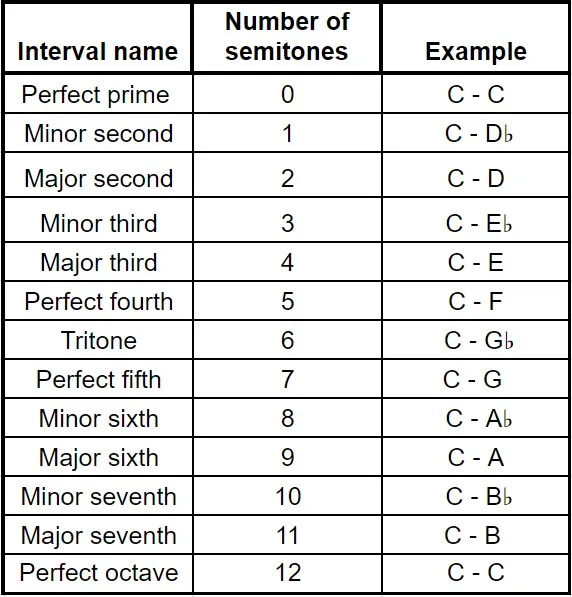Wondering if anyone has a chart/diagram showing the intervalic relationships between the root note of various scales and the subsequent degrees. Not talking about tone-tone-semitone, etc. But rather, what is the interval between the root and the second, third, fourth, fifth, six, and seventh of different scales.
Not a chart, but they are all listed in Mark’s reference guide for scales.
All his reference guides are great to print and have handy.
Google “scale interval chart” and take your pick of dozens.
I did and am not seeing any that list the distance between the root note and scale degrees for major, natural minor, harmonic minor, blues, etc, or the modes.
[edit]: for example A chart from Talking Bass for the minor pentatonic scale shows:
Minor Pentatonic Scale
Alternative Names:
Intervallic Construction: 1,b3,4,5,b7
–
But, it is unclear to me (maybe I am just dense) whether “b3” means that the second note in the scale is a minor third interval from the root note or just a flatted third degree in the major scale.
I guess the confusion for me is that for example, the major scale consists of 7 notes whereas intervals consist of 12 names to correspond to the 12 chromatic tones in a scale.
That’s the same as the minor scale without the 2 and b6
It’s both those things because if you flat the major 3rd from the major scale, you get a minor 3rd. When you see the minor scale described as 1, 2, ♭3, 4, 5, ♭6, ♭7, 8 that’s it’s relationship to the major scale. A minor 3rd is 3 semitones, a major 3rd is 4 semitones, a perfect 5th is 7 semitones so it’s always a minor 3rd plus a major 3rd or a major 3rd plus a minor 3rd.
Here’s one chart that I think shows what you’re after:
I should also point out that flatting something doesn’t always make it a minor interval… a b5 is not a minor 5th eg the Locrian mode 1, ♭2, ♭3, 4, ♭5, ♭6, ♭7
I guess what I am after is a chart, showing, for each scale something like the following for all variations of scales
C-----------D------------E-----------F-------------G-----------A----------B---------C
Prime ---- Maj 2 ------ Maj3------ Perf 4 -----Perf 5-------Maj6 ----- Maj7 —Oct
C Minor scale
C---------D-----------Eb--------F----------G--------Ab--------Bb----C
Prime — Maj 2------Min3 ----- Perf 4 -----Perf 5 — Min6 --Min7-Oct
C Dorian
C ------ D -------- Eb -------F ------ G ----------- A ----------- Bb
Prime—Maj 2-----Min3-----Perf 4— Perf 6 ---- Maj6------ Min7
Etc. etc.
I should also point out that flatting something doesn’t always make it a minor interval… a b5 is not a minor 5th eg the Locrian mode 1, ♭2, ♭3, 4, ♭5, ♭6, ♭7
Thats what I am getting at and why using the “b” “#” thing is confusing to me when trying to analyze scales by the interval patterns.
so you want scales and modes, why not just write them out?
You will remember them better if you do, you are well on your way anyway.
Yes, it’s the chart above because there’s only one scale, the major scale and we relate everything back to that.
yes and that’s the same as 1, 2, b3, 4, 5, 6, b7
You can look at dorian as Major 1, 2, b3, 4, 5, 6, b7 which may be difficult to image the sound of
or you can look at it as the minor scale with a #6 which I think is much easier to imagine because most people know what the minor scale sounds like.
Why are you analyzing scales? I’m not sure what you’re hoping to accomplish with that…I think you’re getting ahead of yourself, maybe just stick to the major and minor scales until you have a better understanding of them.
If you want to work on intervals, play scales with different ascending/descending intervals and work on arpeggios using major 7, dominant 7, minor 7 and minor 7 b5 chords. How things sound is much more important than what they’re called.
You have that information (and more) on the tool I developed a few months back. Take a look at https://fretful.io
Awesome! Thanks!
